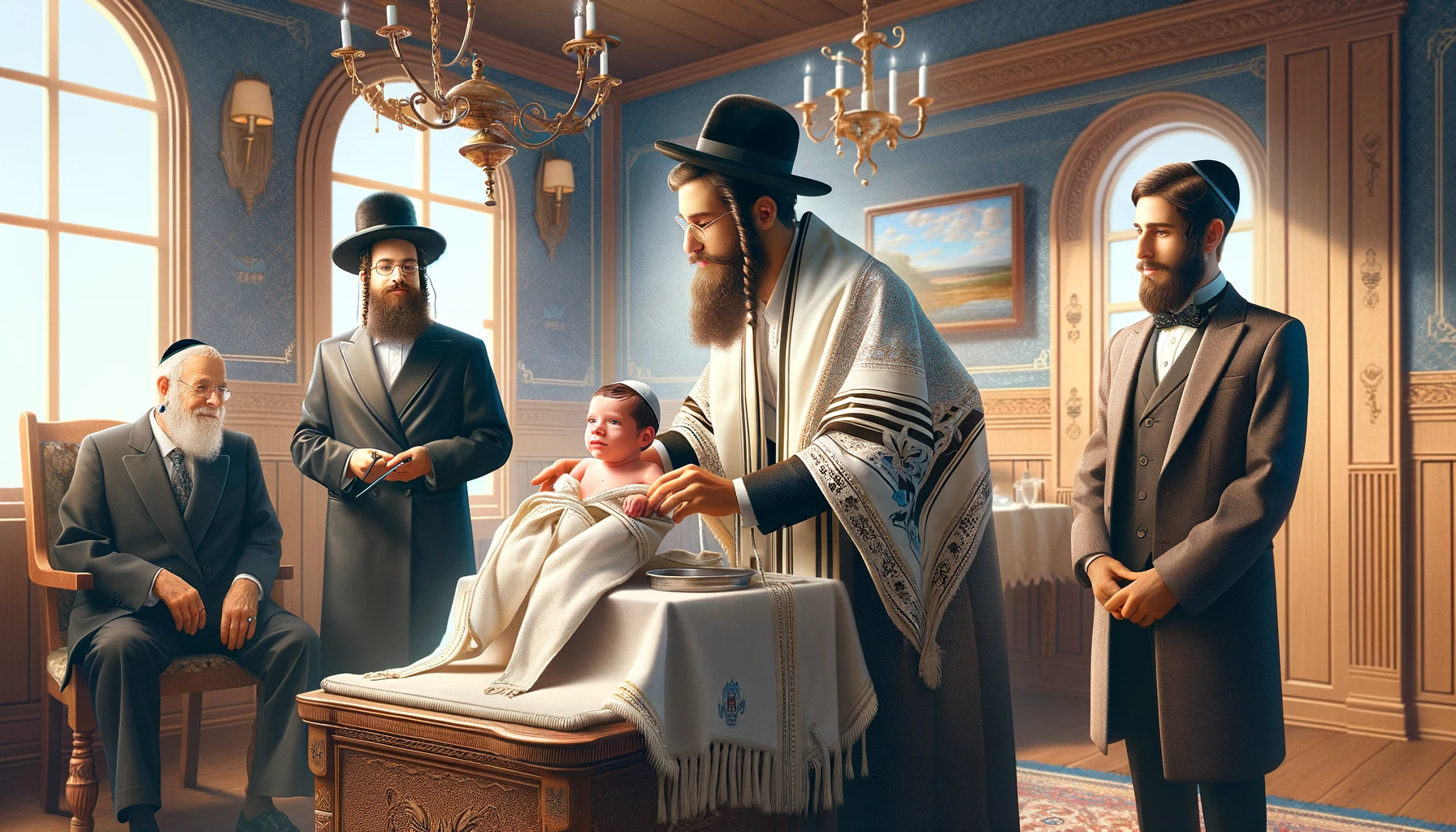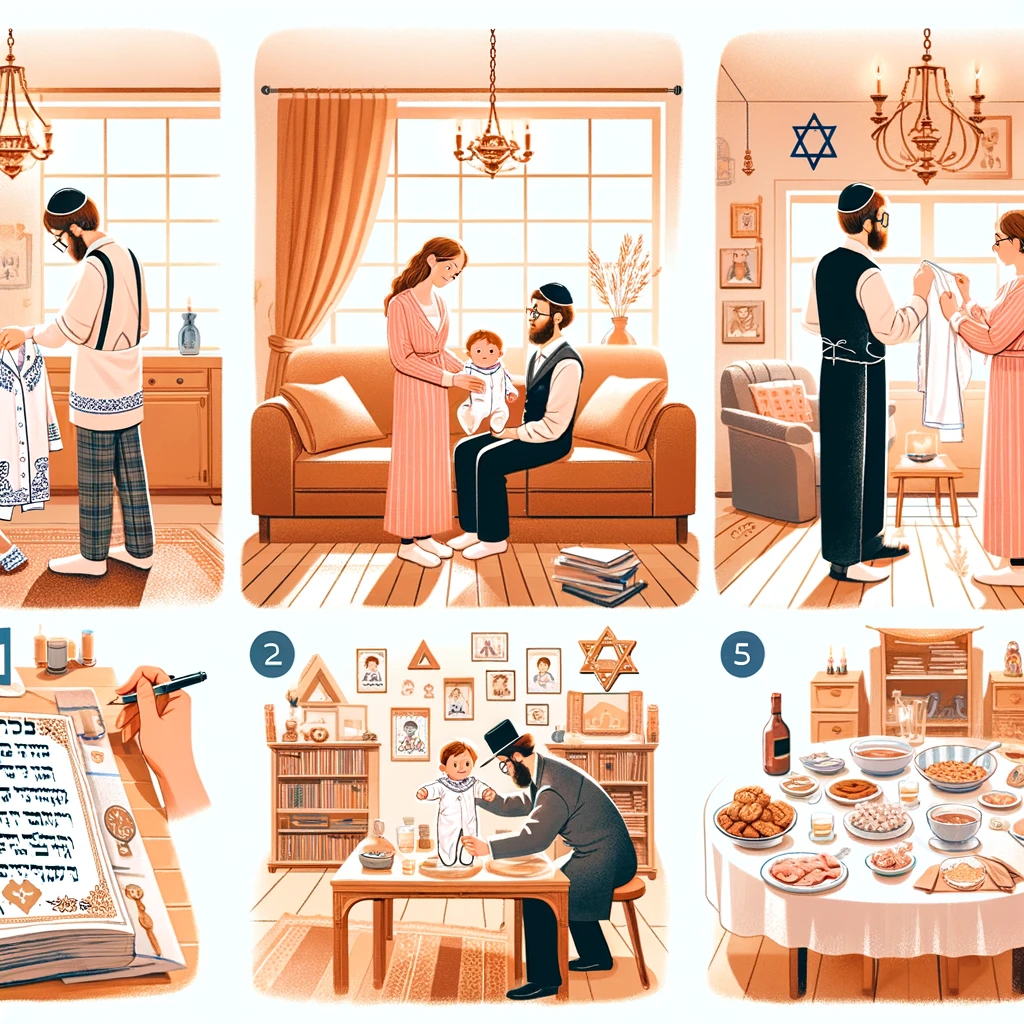Circumcision: Spiritual and Cultural Significance
Qualified sap

 668
668 
Circumcision - A Journey to the Heart of Jewish Tradition
At the heart of Jewish identity is an ancient tradition that serves as a central milestone in the history of the people - circumcision. This is a ceremony that has been performed for thousands of years, a tradition passed down from generation to generation, carrying the spiritual torch that distinguishes the Jewish people. Circumcision represents a pivotal moment in the life of every Jewish baby, marking their official entry into the chain of generations of the Jewish people.
The Historical Significance of Circumcision
The roots of circumcision are deeply embedded in Jewish history and are considered one of the foundations of the special relationship between the people of Israel and their God. According to the account in the Book of Genesis, God commanded Abraham our father to perform circumcision for himself and his sons as a sign of the covenant between them. Thus, circumcision became a binding and eternal symbol, passed down from generation to generation throughout the Jewish diaspora.
In Israel, according to data from the Central Bureau of Statistics, over 60,000 circumcisions are performed each year, accounting for about 90% of all male births in the country. This data reflects the central role of circumcision in Israeli culture and the ability of the Jewish tradition to maintain its central place even in the modern era, despite challenges and social changes.
The Ceremony and Spiritual Significance of Circumcision
Circumcision is much more than a simple medical procedure. It is a highly significant event from a religious, spiritual, and cultural perspective. The ceremony includes the removal of the foreskin from the baby’s genitalia, a procedure carried out by a skilled mohel. However, the true meaning of circumcision lies in its spiritual aspect – it symbolizes the child's entry into the Jewish community and their commitment to live according to the commandments of the Torah.
The mohel, who leads the circumcision ceremony, does not merely perform the physical act; he also represents the connection between the physical world and the spiritual world. The mohel is considered a community messenger, who blesses and guides the family throughout the ceremony while being sensitive and empathetic to the parents' concerns. The mohel serves as a guide and mentor, helping the family connect to the profound meaning of circumcision.
The Symbolism and Social Significance of Honorary Roles in Circumcision
Circumcision is not just the rite of a single officiant; it is a community event that includes symbolic and meaningful roles. The two main honorary roles are the sandak and the kvatter. The sandak, usually one of the baby’s grandfathers or another relative, holds the baby on his knees during the performance of the circumcision. This role expresses the close connection between generations and symbolizes the support and love of the extended family.
The kvatter, another role in the ceremony, is the one who brings the baby to the circumcision and hands them over to the sandak. This role, often dedicated to a relative or close friend, emphasizes the community's partnership in the ceremony and reflects the connection of all involved to this significant moment. In some communities, the kvatter is considered to have a role with deeper symbolic significance, expressing the commitment and responsibility of all community members to care for the newborn.
Circumcision in Israeli Communities: Unity and Diversity
While circumcision is a uniform ceremony in terms of halakhic requirements, it is performed in diverse ways in different communities of the Jewish people. In many Sephardic communities, for example, it is customary to hold the ceremony in the synagogue, whereas in many Ashkenazi communities, the circumcision takes place in the family home. In some communities, special prayers and piyutim are recited during the ceremony, varying from place to place according to local tradition.
For instance, in the Sephardic community, it is customary to sing the piyut “Shalom Zachar” during the festive meal held on the Sabbath evening before the circumcision. This custom expresses the joy of the community and gratitude for the birth of the new baby. In contrast, in many Ashkenazi communities, it is customary to hold a “Shalom Zachar” meal in the synagogue immediately following the evening prayers on Sabbath.
The Impact of Circumcision on Jewish Identity in the Modern Era
Circumcision is not just an ancient tradition but also an important part of Jewish identity in the modern era. Despite technological developments and social changes, the ceremony continues to serve as a firm anchor, expressing the deep connection between Jews and their tradition. In an age of globalization, where many adopt Western and modern lifestyles, circumcision serves as a symbol of the struggle to maintain Jewish identity and religious and cultural heritage.
Additionally, there is also broad public discussion regarding circumcision, especially in certain Western countries where there are pressures to stop the ceremony due to ethical and health issues. Nevertheless, in most Jewish communities worldwide, the ceremony continues to be performed in accordance with Jewish law, grounded in belief in its spiritual and cultural importance.
In Conclusion: Circumcision as an Anchor of Identity
Circumcision is much more than a religious or medical rite; it is a highly significant event that encompasses the cultural, spiritual, and social richness of the Jewish people. Every circumcision is an additional link in the chain of generations, connecting the past, present, and future of our people. In an era of rapid changes and globalization, circumcision continues to serve as a firm anchor, linking us to our roots and our shared identity as a people.
Circumcision is an ancient ritual that has been meticulously preserved and carries within it the story of the Jewish people - a story of faith, tradition, identity, and belonging. Thus, despite all the challenges and changes occurring in the world, circumcision remains one of the most fundamental elements of the Jewish people, serving as a tangible expression of the eternal bond between the Jew and their God.






